
Meet Vanessa Hubing
October 31, 2024Majors: Biological SciencesMinors: Spanish, Psychology This semester, Vanessa is studying abroad in San José, Costa Rica, at the Universidad Veritas.Here, Hubing is participating in

Majors: Biological SciencesMinors: Spanish, Psychology This semester, Vanessa is studying abroad in San José, Costa Rica, at the Universidad Veritas.Here, Hubing is participating in

The Archives and Special Collections within the University of Nebraska–Lincoln Libraries contain a multitude of stories.
Some are well-known — how Willa Cather became a Pulitzer-Prize winning novelist after studying at Nebraska and honing her writing skills here.
Others are more obscure — when alumnus Joseph Ishikawa led a public campaign to desegregate Lincoln’s pools.
But each one shaped the state and its land-grant university.

The stories are told through the documents, photographs, ledgers and books held in the Archives and Special Collections. The collection spans more than 18,000 linear feet inside both Love Library and the Library Depository Retrieval Facility on East Campus — a 900,000-volume temperature and humidity-controlled warehouse.
As the official repository of the University of Nebraska, the archives also hold the original charter for the university and communications, agendas and minutes from the Board of Regents. There are also shelves of records from student organizations, every Cornhusker yearbook and photos of campus life going back decades.
But there are also collections given by alumni, lifelong Nebraskans and people with a connection to the university or state who felt the Libraries were the safest place for their treasures and stories.
The breadth of history in the archives is almost unfathomable, so in honor of American Archives Month, Nebraska Today asked University Libraries archivists for their favorite items or collections that tell a story about the university or state’s past.

The material in the collection follows Joseph Ishikawa from his pre-World War II days (life and education in hometown Los Angeles, travel and education in Japan, and return to the United States). He was incarcerated in Japanese internment camps in California and Colorado and attempted to obtain an educational leave from Japanese internment. He was eventually successful in gaining that leave and began his graduate studies at the University of Nebraska — one of the few universities at the time that was accepting a limited number of students of Japanese ancestry. He had a lifelong interest in art and career as an art professional, including a time as a curator for University of Nebraska Art Museum, which would eventually become the Sheldon Museum of Art. Ishikawa died in 2017.
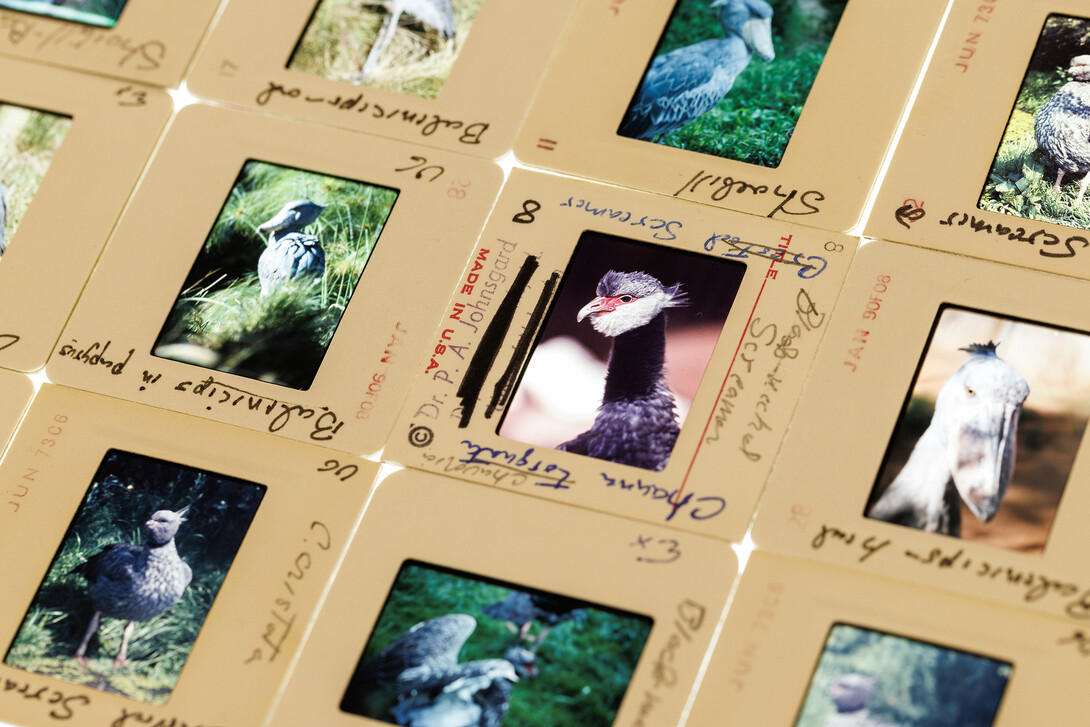
Paul A. Johnsgard was an internationally recognized scientist and was widely recognized as the leading authority on waterfowl. He was both a researcher and gifted photographer and artist, often illustrating his own books. Archives and Special Collections holds many of his photograph slides and illustrations.
Born in North Dakota on June 28, 1931, Johnsgard pursued his education at North Dakota State University, Washington State University and Cornell University. Johnsgard eventually came to the University of Nebraska In 1961 as an instructor in the School of Biological Sciences. He was promoted to assistant professor in 1962, associate professor in 1965, and professor in 1968. In 1980, Johnsgard became a Foundation Professor. Johnsgard's research interests included comparative biology, regional ornithogeography, regional natural history, and Nebraska ornithology, especially the yearly crane migration. He published numerous books including comparative biologies of several major bird groups of the world. He also wrote for the popular and children's market.
Johnsgard held memberships in several professional organizations including the American Ornithologists' Union, the Cooper Ornithological Society, the Wilson Ornithological Society and the Nebraska Ornithologists' Union. He received the Wildlife Society's highest honor for publications as well as the Mari Sandoz Award for his writing.
Paul Johannes Amen (1916-2005) lettered in football, basketball and baseball at the University of Nebraska. He was also a phenomenal high school athlete, eventually inducted in the Nebraska High School Hall of Fame. As a college sophomore, he was a member of the U.S. Olympic baseball team at the 1936 Summer Olympics in Berlin, which was considered an exhibition game. He played in the minor leagues in 1938 and 1939 before ending his athletic career.
His handwritten diary shares his experience of the Berlin Olympics, which were held under the cast of the recent election of Adolph Hitler. The Amen collection also includes photos and an Olympic medal for his participation (pictured above).
Amen went on to become the head baseball coach at the United States Military Academy from 1943 to 1954, and then became the head football coach at Wake Forest University from 1956 to 1959. Following his coaching career, he had a very successful career in banking, eventually being appointed in 1979 as director of the Nebraska Department of Banking and Finance by Gov. Charles Thone.
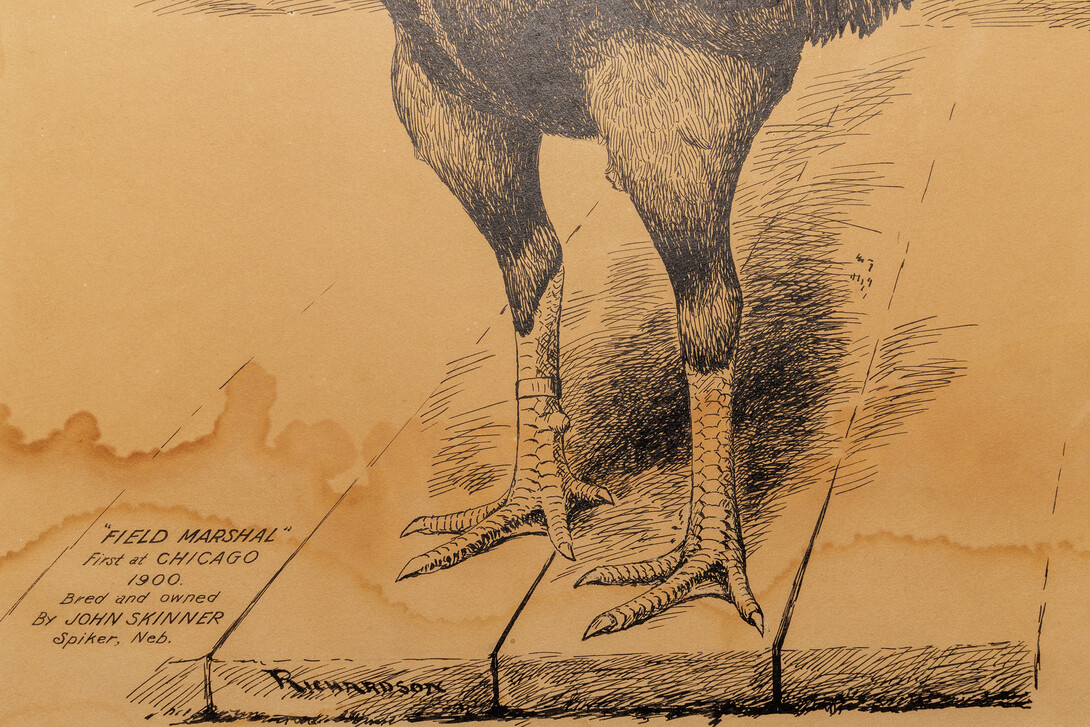
"Field Marshal" was a Dark Cornish (Indian Game) rooster awarded first prize at the first Chicago International Livestock Show in 1900. The rooster was owned and raised by John Skinner of Spiker, Nebraska. Industrial leaders conceived a livestock exposition to rival the largest held in England. The purpose of the exposition was to teach farmers and ranchers how to better feed and care for animals to produce better meat. These international exhibitions continued in Chicago until 1975.
The drawing was an important heirloom to the family, and was given to the Libraries by John L. Skinner, the grandson of the champion chicken breeder, and former Nebraska faculty member and professor emeritus in poultry husbandry at the University of Wisconsin. The junior Skinner wrote that his grandmother gifted him the drawing because he “showed a lot more interest in chickens than any of the aunts and uncles.” He was inducted into the American Poultry Hall of Fame in 1989.
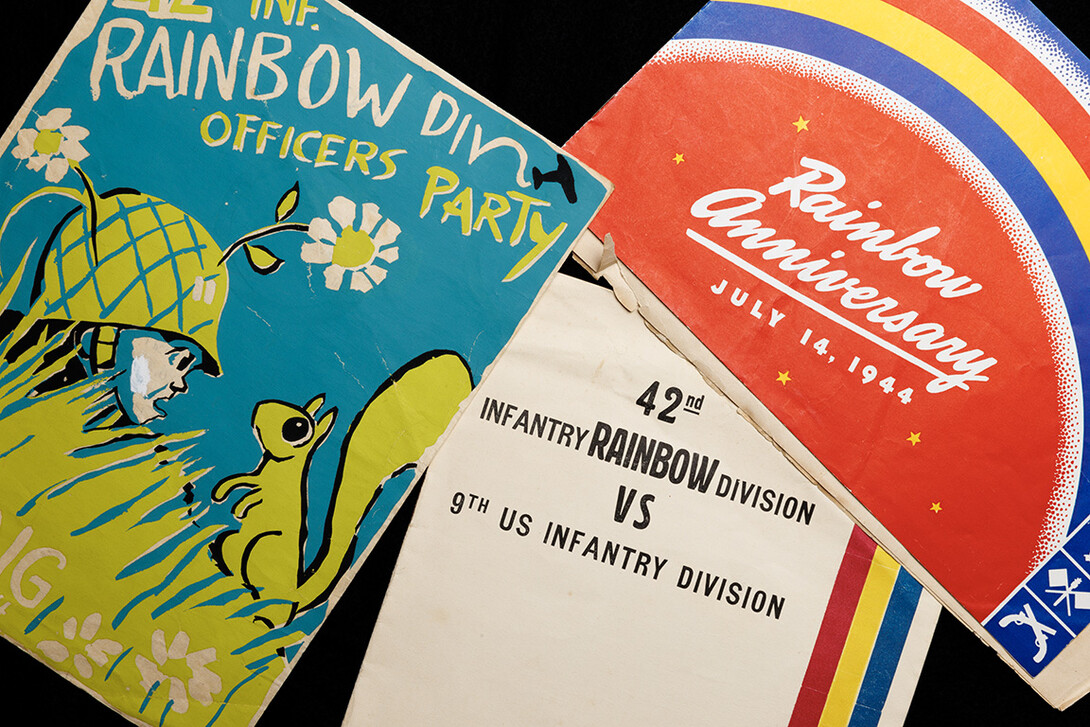
The items within the Rainbow Division Veterans Association Records document the activities and history of the 42nd Rainbow Division and of the Rainbow Division Veterans Association from 1917 to 2000. Among the collection are fliers for services, prayer sheets, a bunk drawing (showing how to properly organize uniforms, toiletries, etc.), meeting records other miscellaneous items that illustrate the service of the organizations.
The Rainbow Division was the nickname of the 42nd Infantry Division of the Army National Guard, and has been deployed in nearly all conflicts since World War I. The nickname came from the fact that the division was comprised of 27 National Guard units from across the United States, including Nebraska, and in Gen. Douglas MacArthur’s words, the division would stretch across the United States “like a rainbow.” In World War II, the 42nd was among the liberators of the Dachau concentration camp. The Archives and Special Collections holdings include testimonials and correspondence about the liberation and what soldiers witnessed.
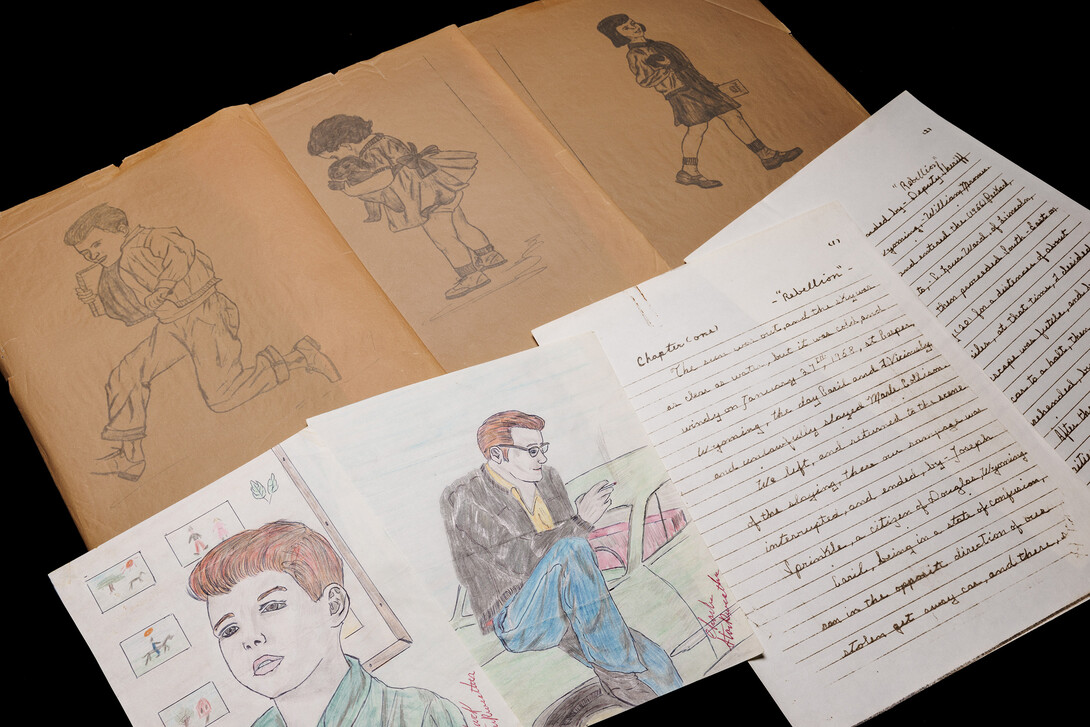
James M. Reinhardt served as a professor of sociology at the University of Nebraska from 1931 to 1963, instructing students in criminology and sociology. During his career, Reinhardt published many books and articles about sociology and criminology, including “The Murderous Trail of Charles Starkweather,” “The Psychology of Strange Killers,” and “Principles and Methods of Sociology.”
The papers include correspondence regarding criminal cases that Reinhardt worked on as a consultant or that he researched, as well as correspondence with convicts. Included in the convict correspondence are letters from Charles Starkweather. Starkweather also shared some of his writings and drawings with Reinhardt.
Also in the collection are research materials and notes, publications, memorabilia and awards presented to Reinhardt during his career. Of special note is an autographed picture of J. Edgar Hoover. Reinhardt worked nationally and internationally with law enforcement, including the Federal Bureau of Investigation, and was considered to be one of the foremost authorities on crime. Due to the graphic nature of the papers and documents related to murder and sex crimes in the Reinhardt papers, this collection is restricted and access to these materials must be requested in writing.
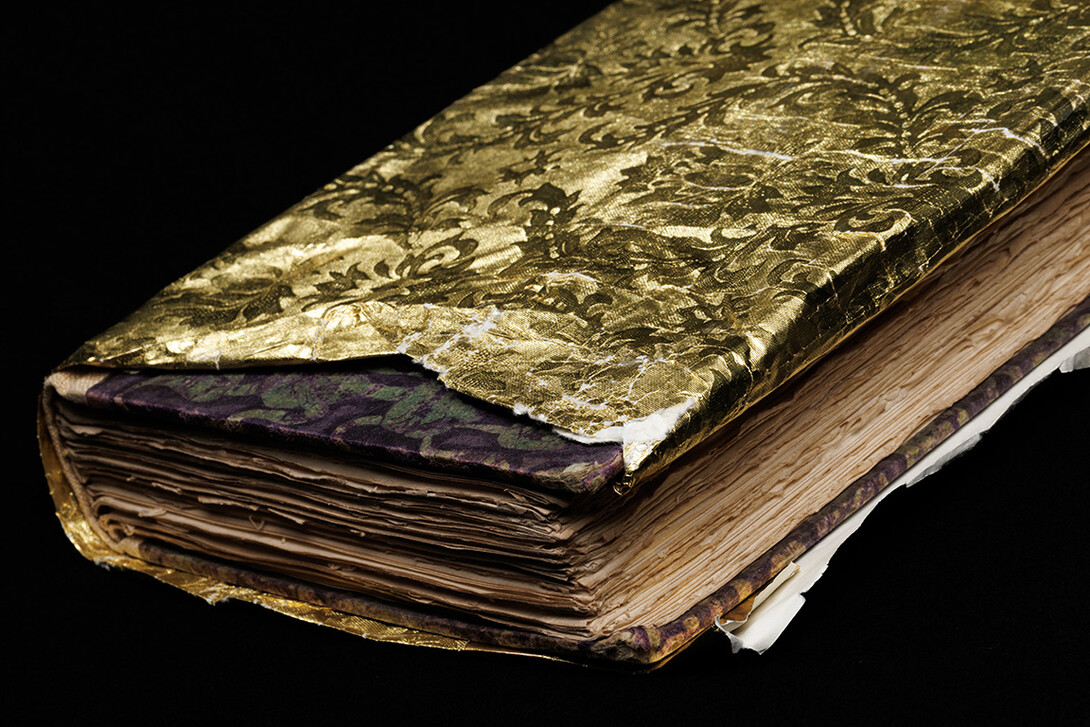
This particular book is found in the Roscoe and Meta Cather Collection. It was number 270 of a limited edition of 345 copies signed by Willa Cather, perhaps the university’s most famous alumna. The inscription reads, "To my darling Mother I send this book of my heart. Willa Cather New York.”
The book is still wrapped in the gold foil paper Cather placed it in to gift it to her mother.
“One of Ours” was published in 1922 and went on to win the 1923 Pulitzer Prize for the Novel.

The Palladian Literary Society started in fall of 1871 as the first student organization on campus. The society took its name from the Greek goddess Pallas Athene.
The society held a meeting each Friday night that included literary readings, music and debates. Additional activities included banquets for active members and alumni, and a picnic each spring in Crete, Nebraska. Initially the alumni association for the society were named the Links.
The Gavel Club identified the past presidents. Active membership in the society declined in the 1960s although the alumni continued to celebrate with anniversary programs. The last program for the Palladian Society took place in 2000.
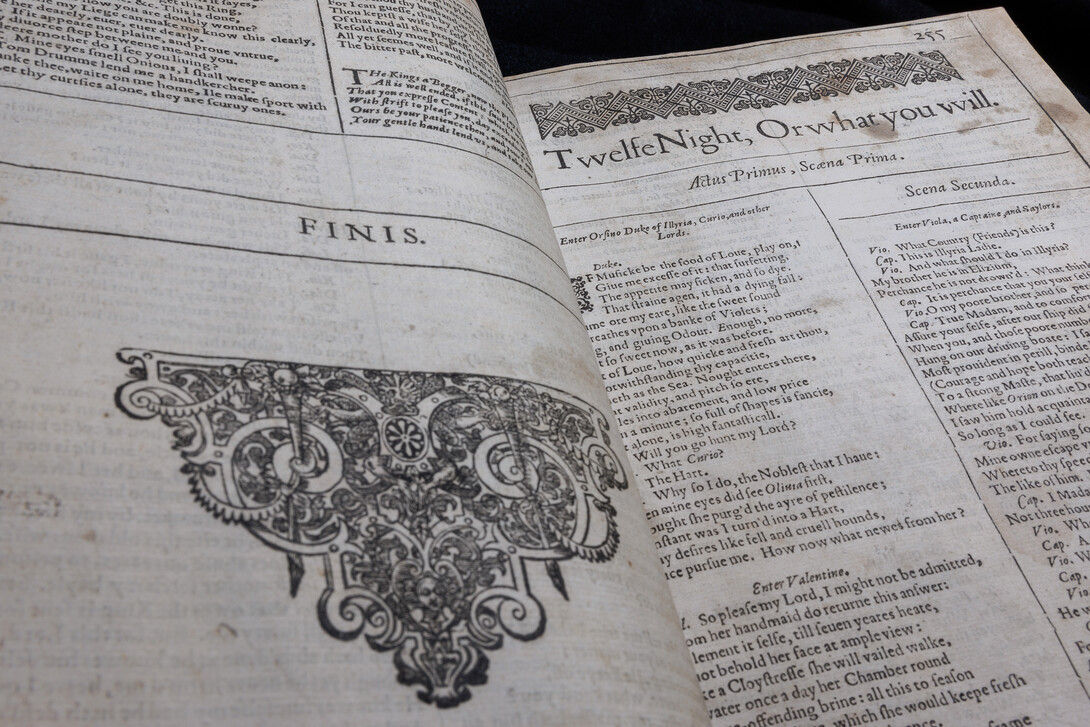
The First Folio turned 400 years old in 2023. In April 1991 it was celebrated as the two-millionth volume added to the University of Nebraska–Lincoln Libraries. Sidney Johnsen Wayland gifted it in honor of her late father, Johnny Johnsen, who had owned Long’s Bookstore and the Nebraska Bookstore and was an avid book collector. In 1991, when the Libraries received the first folio, it was estimated to be one of 230 copies still in existence, but since that time, the number of known copies has risen to about 235. Only 750 copies were originally printed. Eighteen of the plays included in the First Folio had never been published before and may not be known today if they had not been gathered for the publication.
The first folio was published in 1693, about seven years after Shakespeare’s death. The 401-year-old volume is in remarkably good condition — largely due to the imported rag paper the printers used — and still contains handwritten notes from readers past.

This Russian samovar was acquired by Anne Barr Clapp and awarded as a trophy for women’s basketball tournament champions in the early 1900s. Because it is an archive rather than a museum, this is one of only a few artifacts found in the Archives and Special Collections. Anne Barr Clapp became the women’s gymnasium director at the University of Nebraska in 1895. She introduced women’s basketball at the university in 1896 and helped develop early teams.
In 1897, another well-known alumna, Louise Pound, joined as team captain, and the competitions began to include opponents from outside the university.
After much success for the women’s basketball team under Clapp and Pound’s leadership, Edna Barkley, dean of women, made objections to women’s intercollegiate athletics. In 1908, the Board of Regents agreed, adopting the recommendation that “the young ladies of the university student body shall not engage in interstate games and contests.” Women’s varsity intercollegiate athletics disappeared from campus for nearly six decades, but intramurals persisted.
Click through the slideshow below to see more photos of these objects and others in the university's Archives and Special Collections.


A Husker virologist has received a grant from the National Institutes of Health to advance the 40-year quest to develop a vaccine against HIV, which infects about 40 million people globally and has caused an estimated 42 million deaths since the epidemic began.
Qingsheng Li, Willa Cather Professor of biological sciences and a member of the Nebraska Center for Virology at the University of Nebraska–Lincoln, recently received a five-year, $3.5 million R01 grant from the NIH to advance work on an mRNA vaccine against HIV. His approach may overcome what has been one of the most intractable obstacles in the field: the virus’ ability to rapidly mutate, which has led to hundreds of thousands of HIV strains. By targeting parts of the virus that are consistent across this vast genetic diversity, Li’s formula has potential to achieve a level of efficacy that has so far eluded the field.
The formulation of mRNA packaged inside lipid nanoparticles is also novel for its temperature stability. Vaccines using mRNA typically require ultralow temperatures offered by specialty freezers, which are scarce in developing countries. Li’s design would enable storage for several months at about 4 degrees Celsius — the temperature of an average refrigerator.
“We think this approach has great potential, particularly in poorer countries, because it’s difficult for them to access ultralow-temperature freezers,” he said.
For this project, Li and long-term collaborator Ma Luo of the University of Manitoba and the National Microbiology Laboratory in Canada drew guidance from research on a group of female sex workers in Kenya who, despite repeated exposure to HIV, remain resistant to infection. Their natural immunity stems from a focused immune response of virus-specific CD8 T cells, which are key to clearing infections, around certain sites on the HIV virus that are vital for its survival and replication.
To mimic this natural immunity, Li’s team developed mRNA encoding 12 novel HIV immunogens — molecules used in vaccines that trigger a particular immune response — that correspond to these sites. The researchers packaged this mRNA inside lipid nanoparticles, which allows for safe transport to target cells.

A major advantage to focusing the vaccine on these 12 viral immunogen sites is that they are conserved globally across most HIV subtypes. The team’s early study in monkey models showed that about 80% of the monkeys were protected against SIV — a monkey version of HIV — transmitted through a vaginal route. Now, the team will test rectal transmission — the most common route of HIV spread in the U.S.
Another key difference is that previously, the team administered the vaccine immunogens one by one. In this project, they will combine the 12 immunogens into a single vaccine, a key step toward manufacturability. This approach will also prompt a stronger immune response.
The vaccine’s ability to withstand higher temperatures could be a major innovation in the mRNA vaccine space. The COVID pandemic fast-tracked development of mRNA technology, but the material’s propensity to break down rapidly and easily at average temperatures has been an Achilles’ heel to global deployment. Li’s “cold chain friendly” design — for which he is currently pursuing a patent — could open the door to increasingly extensive use of mRNA vaccines.
Li’s project comes at a time of debate in the research community about the possibility of ever developing an effective HIV vaccine, a problem that has vexed scientists since the 1980s. Designing a successful vaccine has proven extremely difficult: Only one clinical trial has shown any efficacy, and it was only 31% effective — not robust enough for regulatory approval.
At the same time, treatments — primarily antiretroviral therapies and pre-exposure prophylaxis — have become increasingly effective, blunting the public’s memory of the HIV pandemic’s height in the 1980s and early 1990s. But the treatments are expensive, not accessible to all and some are associated with health problems like heart disease, kidney impairment and bone loss. And antiretroviral therapies do not eradicate HIV; they suppress it to undetectable levels, meaning the virus will “wake up” if the patient forgets to take medication, forgoes treatment or loses health care access.
Effective antiretroviral therapies also require early detection of the virus, which is sometimes impossible in developing countries and difficult in the U.S. because of social stigmas.
That’s why Li and many other researchers keep pushing forward despite scientific setbacks, waning public interest and a divisive political environment surrounding vaccines. Solving the puzzle, he believes, will open the door to quashing other pathogens.
“Some people believe we will never have an HIV vaccine, but we truly believe vaccines are the most cost-effective method to prevent infectious diseases.
“Boiled down, it’s a fundamental scientific question: Why, using currently available scientific methods, can we not find a solution to the HIV vaccine? If we answer that question, it won’t just resolve the HIV vaccine, it’s going to resolve a lot of other vaccine challenges.”
NIH R01 grants are the agency’s original and oldest grant mechanism. They provide support for health-related research and development based on the institutes’ mission.




Majors: Biological sciences, psychologyGraduation year: 2021Current role: Senior Analyst at Association of State and Territorial Health Officials (ASTHO) What do you d

Kearah Perreault is a first-year biology student on the pre-med track, already making a big impact on the Nebraska community. She is currently a certified nursing assistant (CNA) at S

Jacey is a sophomore biology major working at the Nebraska Center for Virology, researching ways to protect crops from viruses that cause major damage to global crop yields.So far in